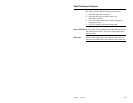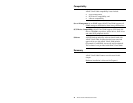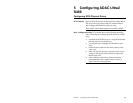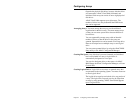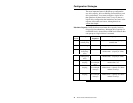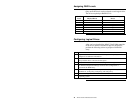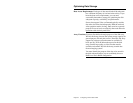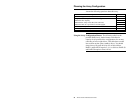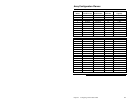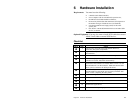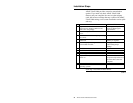
Chapter 5 Configuring ADAC Ultra2 S466
47
Configuration Strategies, Continued
Maximizing Drive Availability You can maximize the availability of data
on the physical disk drive in the logical array by
maximizing the level of fault tolerance. The levels of fault
tolerance provided by the RAID levels are:
RAID Level Fault Tolerance Protection
0 No fault tolerance.
1 Disk mirroring, which provides 100% data redundancy.
3 100% protection through a dedicated parity drive.
5 100% protection through striping and parity. The data is
striped and parity data is written across a number of physical
disk drives.
10 100% protection through data mirroring.
30 100% protection through data striping. All data is striped
across all drives in two or more arrays.
50 100% protection through data striping and parity. All data is
striped and parity data is written across all drives in two or
more arrays.
Maximizing Drive Performance You can configure an array for optimal
performance. But optimal drive configuration for one type
of application will probably not be optimal for any other
application. A basic guideline of the performance
characteristics for RAID drive arrays at each RAID level
is:
RAID Level Performance Characteristics
0 Excellent for all types of I/O activity, but provides no data
security.
1 Provides data redundancy and good performance.
3 Provides data redundancy.
5 Provides data redundancy and good performance in most
environments.
10 Provides data redundancy and excellent performance.
30 Provides data redundancy and good performance in most
environments.
50 Provides data redundancy and very good performance.



